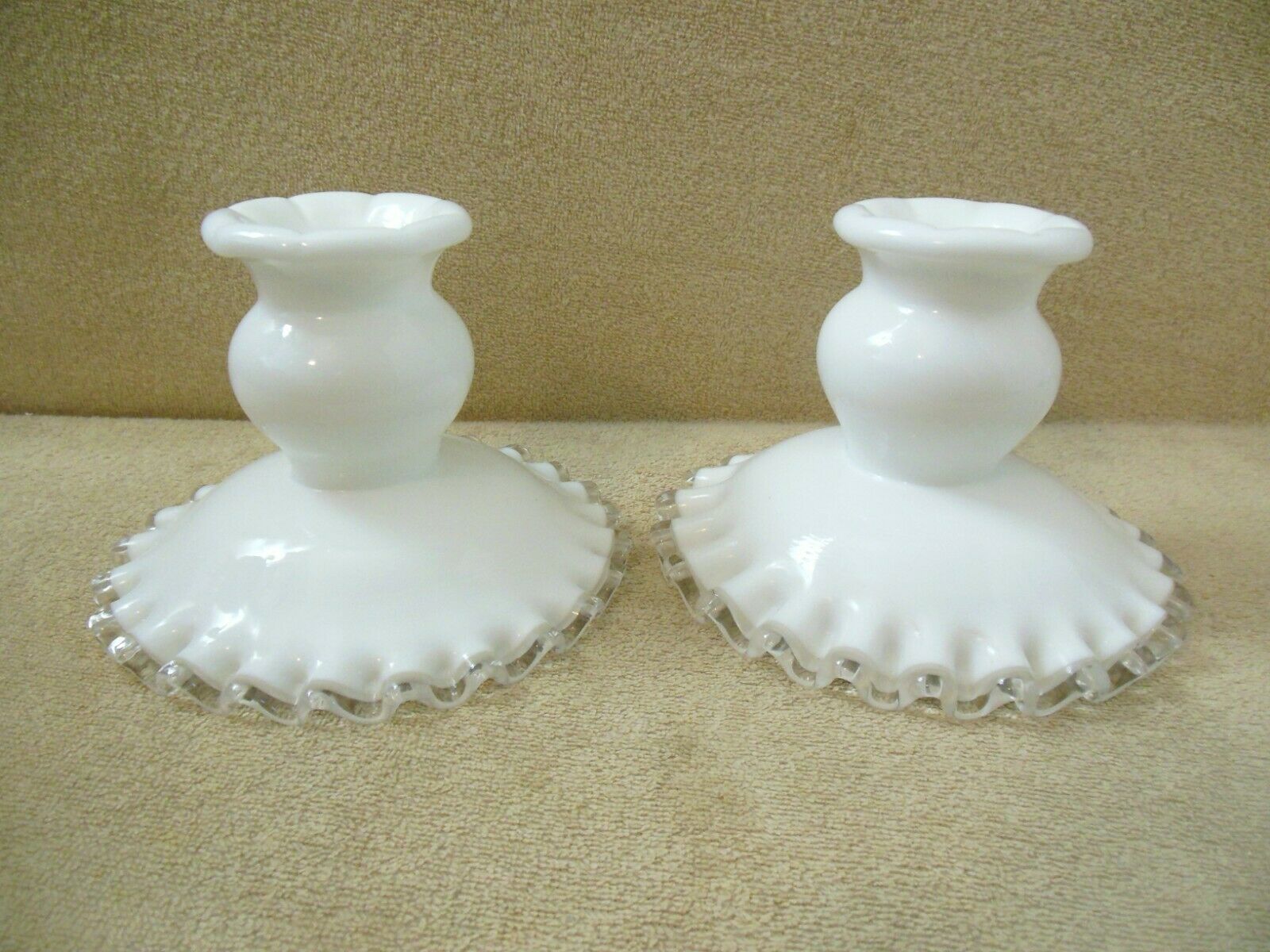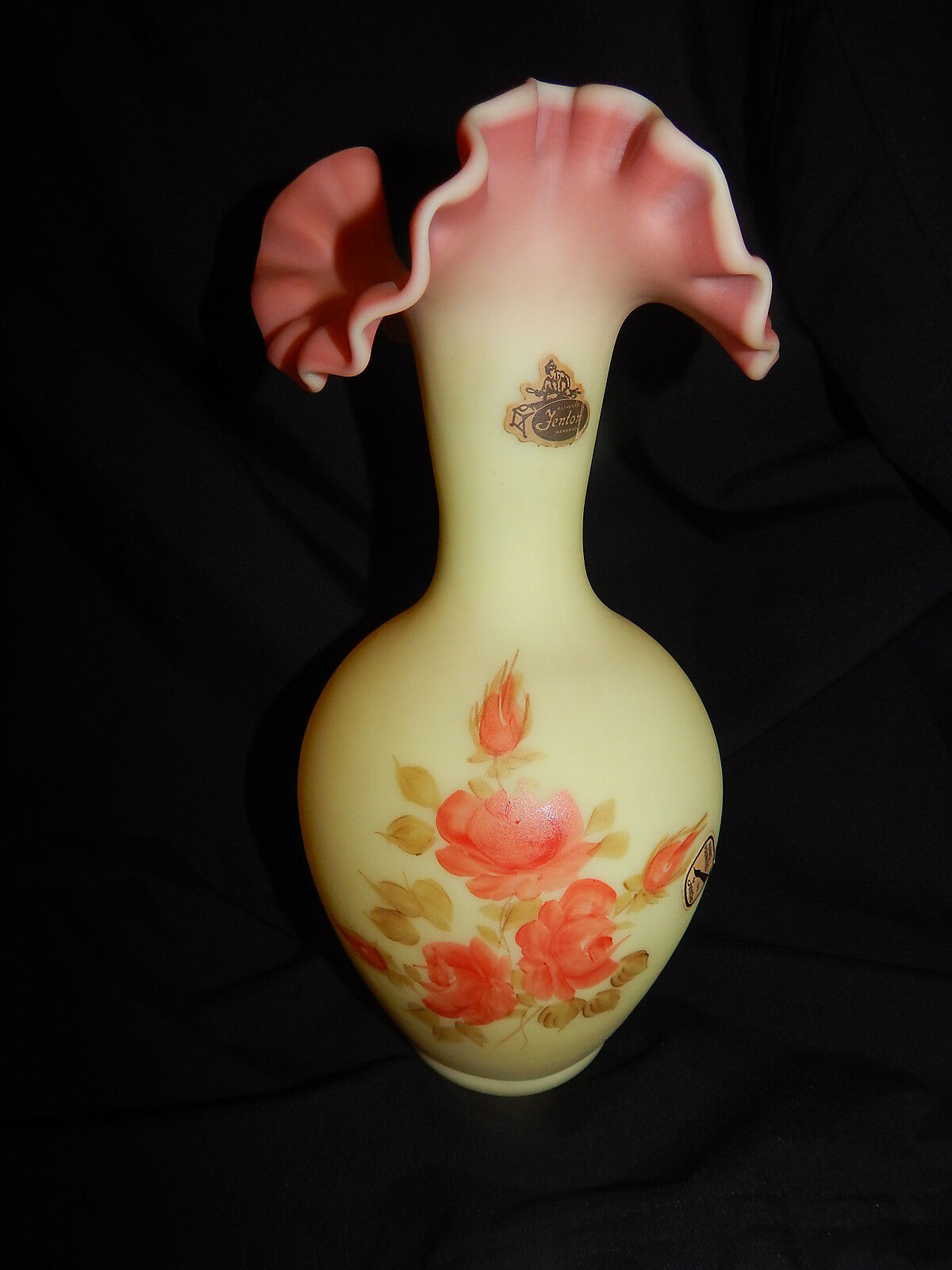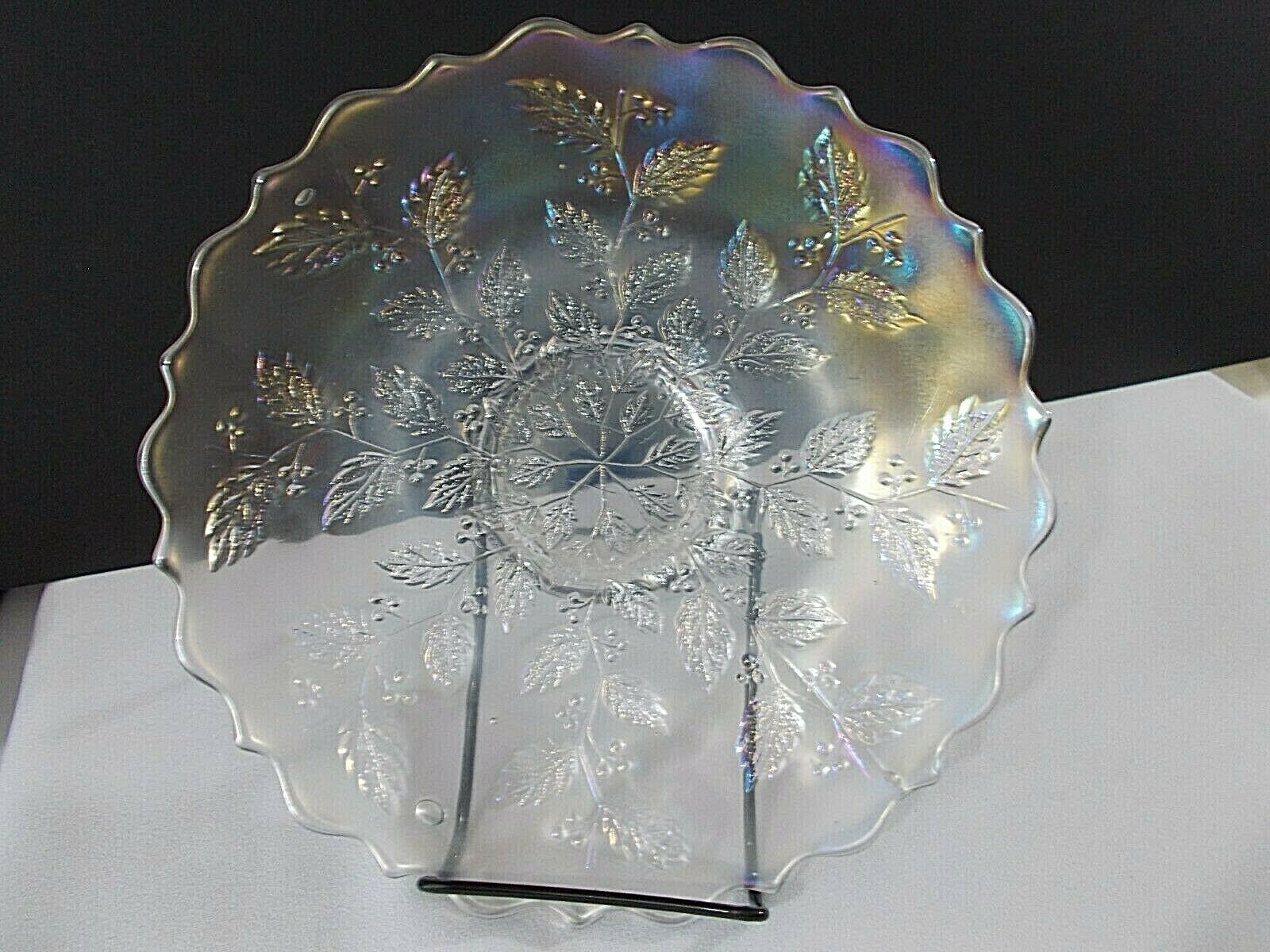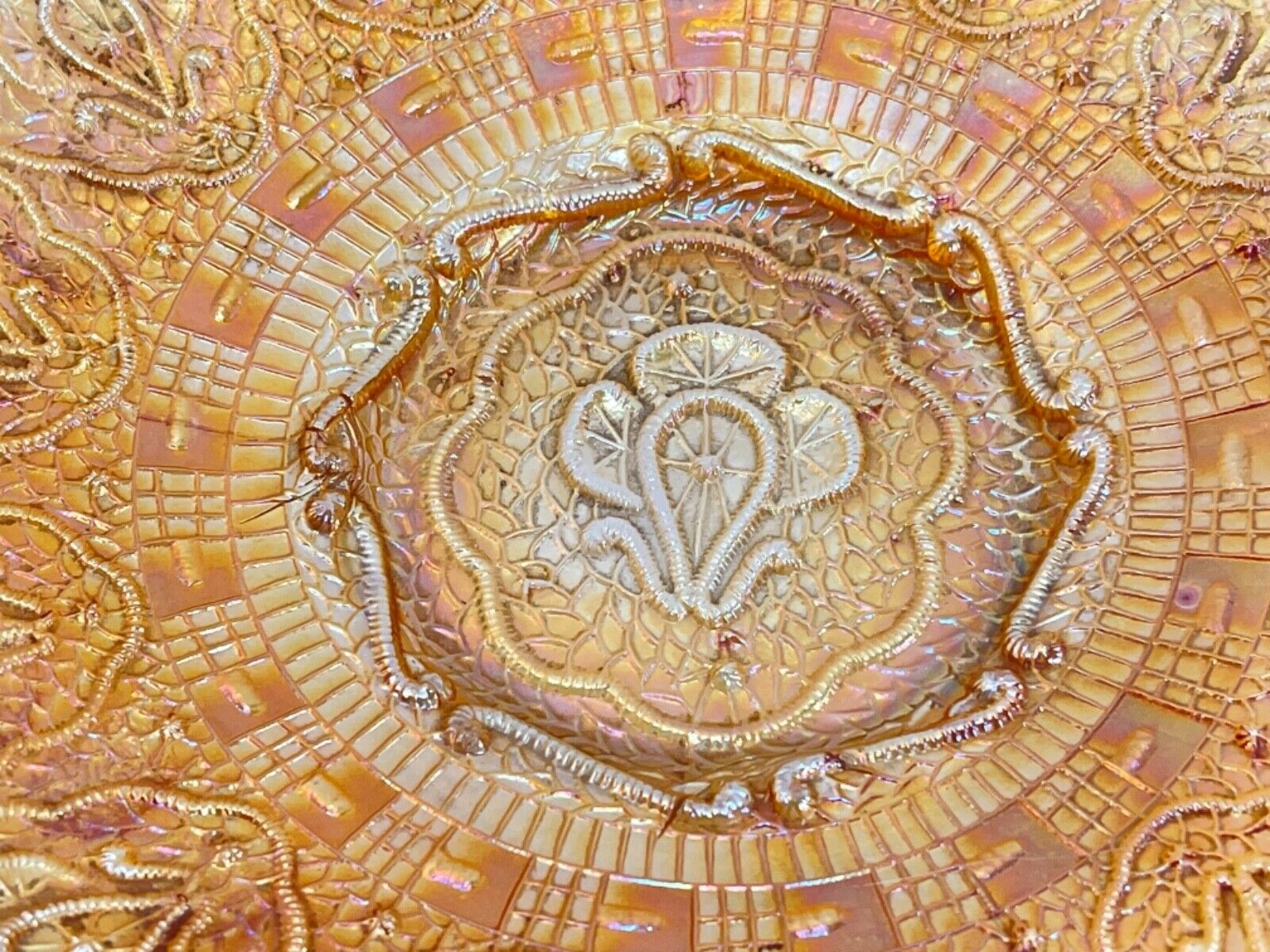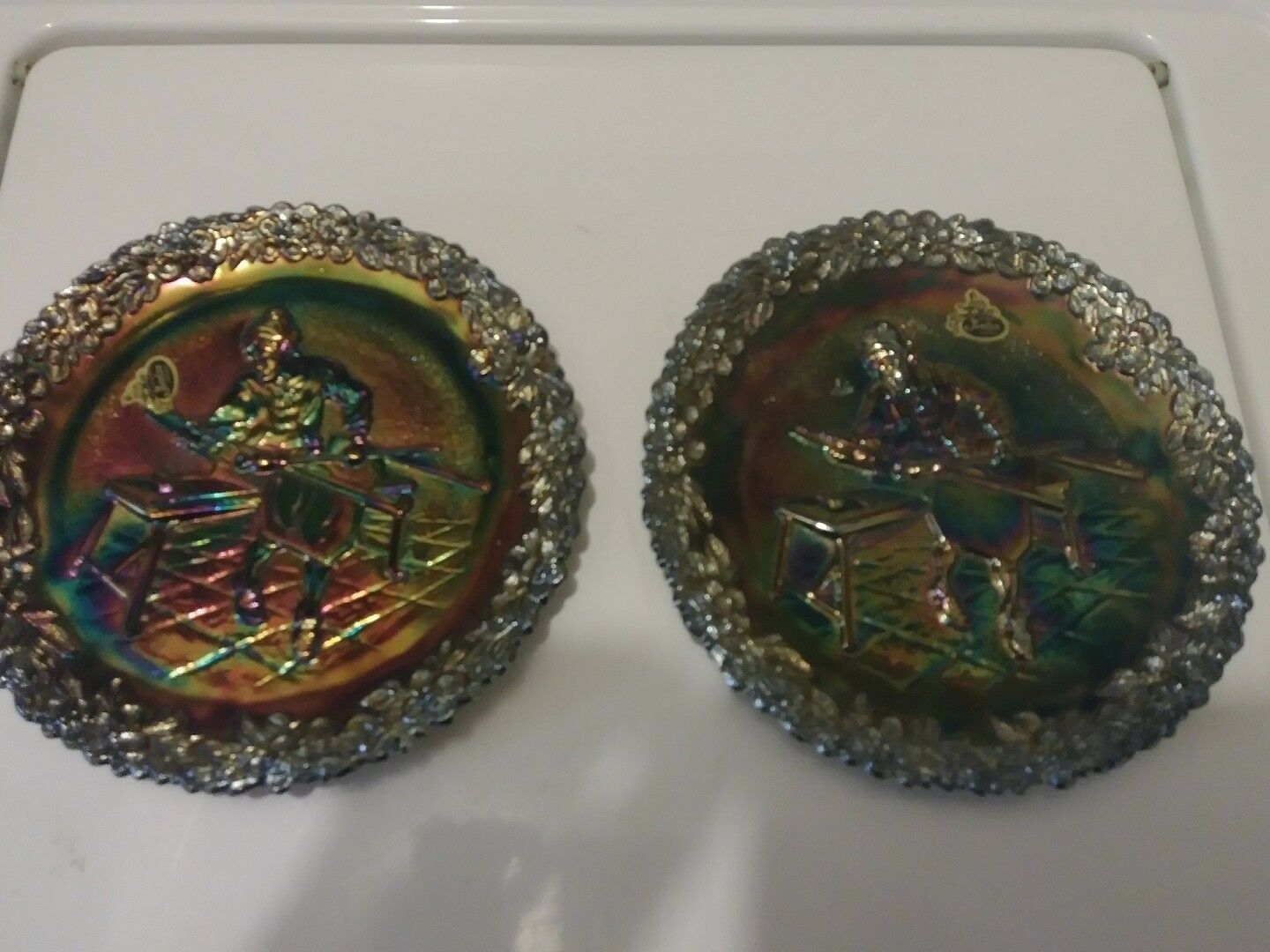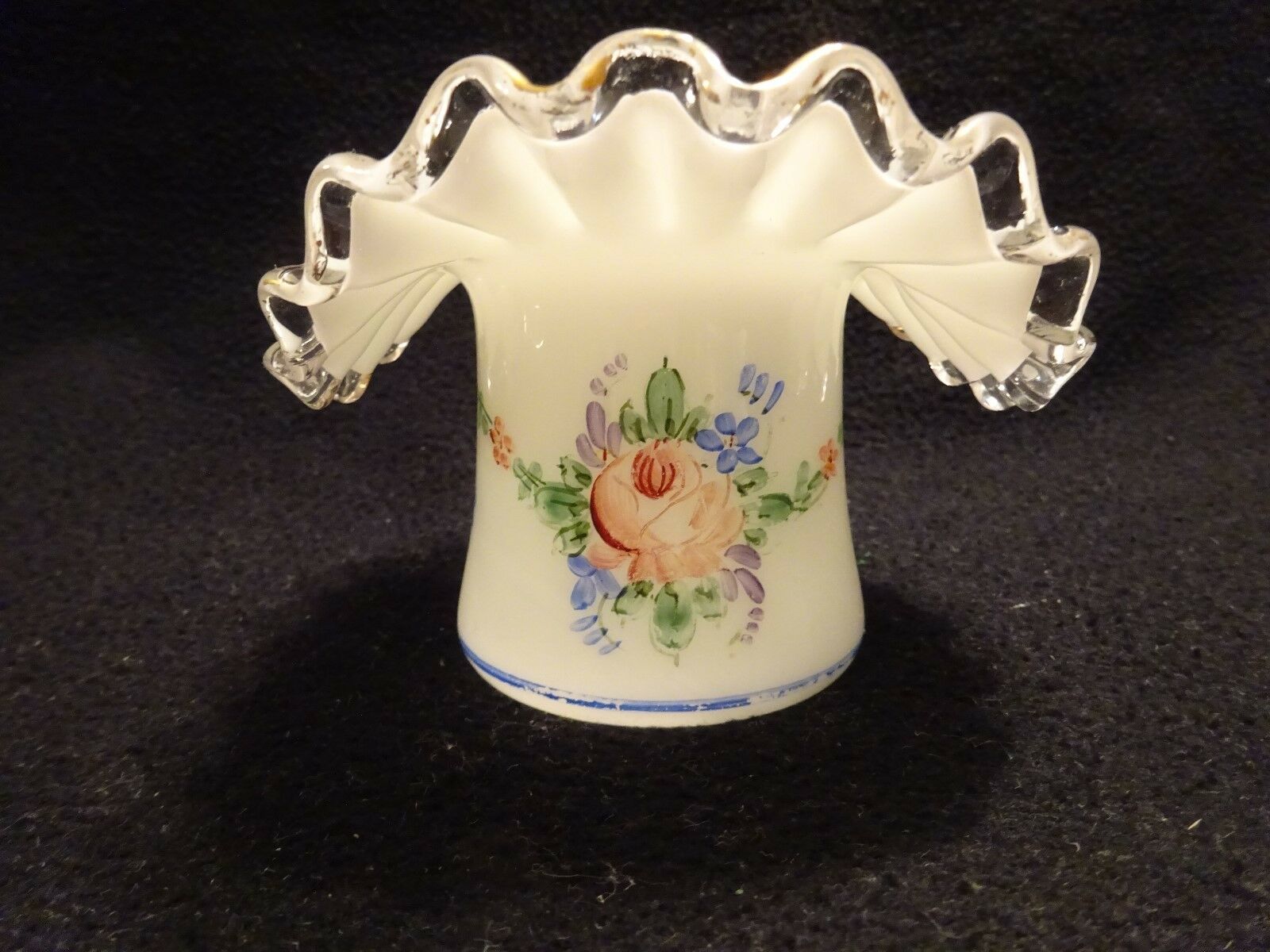-40%
Fenton Carnival Glass Chrysanthemum Amethyst Hexagonal Planter Bowl Vase verlys
$ 42.23
- Description
- Size Guide
Description
CAN YOU SEE THE FLOWERS BLOOMING IN THIS PLANTER??Vintage Carnival Glass Chrysanthemum Planter, Beautiful Fenton Octagon Carnival Glass Vase, Fenton Iridescent Amethyst Bowl, Fenton Chrysanthemum Dish
Deep Rich Carnival Glass in Peacock Colors, Signed Fenton
This Planter is very heavy and is a darker Amethyst than normal, but, it is not Black Amethyst. The interior is Plain. This sits flat on 6-Scalloped Toes. This is signed Fenton on the base. The iridescence is nice and even on this item.
Circa 1970-72.
~NO CHIPS OR CRACKS~
Approximate dimensions:
4 1/8 inches high.
7 1/2 inches wide top.
6 1/4 inch base.
This is vintage supper pretty carnival glass bowl, very nicely iridized and well struck bowl . in perfect condition without chips,cracks or repairs.....it is exactly as it came from the factory years ago
This Fenton bowl has bright iridescent ( please look at the pictures )
One thing is true: It look absolutely stunning and exposure to the light in different angles awakens different colour tones. That what makes photography tricky while dealing with beautiful pieces like these as you, simply by capturing the moment, stop that beauty of the colour in the motion, which human eye is able to catch while observing and admiring changeable beauty of objects like Fenton's Carnival Glass samples.
I'll leave you examine images for now. I guess collectors and professionals will be looking at this listing and I am absolutely positively sure that they know what they are looking for. There is a lot of books and articles on the web dedicated to Fenton Art Glass Company and samples of their exquisite creations. After the Company has ceased their traditional glassmaking production in 2011, interest to to their products soared and demand, especially for antique and vintage samples, increased dramatically and price tags are soaring still.
Please look at my other listing for more rare carnival glass including
NORTHWOOD MARIGOLD CARNIVAL GLASS "PEACOCK & URN" MASTER ICE CREAM BOWL
Please check my other listing for additional fine crystal And art glass including Favrile by Tiffany Studios, Carnival glass by ( Fenton & Dugan ), Daum Nancy, René Lalique, Sabino, Art Vannes France, Verlys, Waterford, Bambini, Loetz, Steuben, Baccarat, Orrefors, Kosta Boda, Italian ( Murano Venetians ), French, Austria, Finland, Swedish, Irish glass and more
Carnival glass
is moulded or
pressed glass
, always with a pattern and always with a shiny, metallic, '
iridescent
' surface shimmer.
The keys to its appeal were that it looked superficially like the much finer and much more expensive blown iridescent glass by
Tiffany
, Loetz and others and also that the cheerful bright finish caught the light even in dark corners of the home.
Both functional and ornamental objects were produced in the carnival finish and patterns ranged from simple through geometric and 'cut' styles to pictorial and figurative. A wide range of colours and colour combinations were used but the most common colours accounted for a large proportion of output, so scarce colours can today command very high prices on the collector market.
Carnival glass has been known by many other names in the past: aurora glass, dope glass, rainbow glass, taffeta glass, and disparagingly as 'poor man's Tiffany'. Its current name was adopted by collectors in the 1950s from the fact that it was sometimes given as prizes at carnivals, fetes, and fairgrounds. However, that can be misleading as people tend to think that all of it was distributed in this way but evidence suggests that the vast majority of it was purchased
[1]
by the housewife to brighten up the home at a time when only the well off could afford bright electric lighting.
Some carnival glass is still produced today although in very small quantities. At the height of its popularity in the 1920s huge volumes were produced and prices were low enough for the ordinary home to afford.
Starting at the beginning of the 20th century, carnival glass was eventually produced on every continent except Africa and Antarctica but largely and initially in the
U.S.
. All the major European glass making centres except Italy produced some and it was very popular in Australia.
Carnival glass gets its iridescent sheen from the application of metallic salts while the glass is still hot from the pressing. A final firing of the glass brings out the iridescent properties of the salts, giving carnival glass the distinct shine it is known for.
History
Edit
Carnival glass originated as a glass called 'Iridill', produced beginning in 1908 by the
Fenton Art Glass Company
(founded in 1905). Iridill was inspired by the fine blown art glass of such makers as
Tiffany
and
Steuben
, but did not sell at the anticipated premium prices and was subsequently discounted. After these markdowns, Iridill pieces were used as
carnival
prizes.
Iridill became popular and very profitable for Fenton, which produced many different types of items in this finish, in over 150 patterns. Fenton maintained their position as the largest manufacturer and were one of very few makers to use a red coloured glass base for their carnival glass. After interest waned in the late 1920s, Fenton stopped producing carnival glass for many years. In more recent years, due to a resurgence in interest, Fenton restarted production of carnival glass until its closure in 2007.
Most
U.S.
carnival glass was made before 1925, with production in clear decline after 1931. Some significant production continued outside the US through the
depression years
of the early 1930s, tapering off to very little by the 1940s.
Often the same moulds were used to produce clear and transparent coloured glass as well as carnival versions, so producers could switch production between these finishes easily according to demand.
Edit
Colors
Edit
Carnival glass was made in a wide array of colors, shades, color combinations and variants. More than fifty have been formally classified. These classifications do not go by the surface colors showing, which can be even more varied, but by the 'base' colors of the glass before application of the iridizing mineral salts.
In order to establish the base color you have to find an area of the item which had no mineral salts applied, which is usually the base, and hold the item up to the light in such a way that you can see through that area. This is usually easy enough to do, but it can still be difficult for the inexperienced to differentiate the exact base color between the many possibilities as there are often only subtle differences, as well as variations.
The final (post doping) surface shades also vary according to the depth of base color, as well as any special treatments and the type and amount of salts used. This last variable caused significant variation to occur, even between batches of what should have been essentially the same color or color-way. This happened most frequently in early production but to such an extent that collectors now differentiate between these items, describing the degree of iridescence showing.
The most popular color for carnival glass is now known by collectors as 'marigold' although that name was not in use at the time. Marigold has a clear glass base and is the most easily recognizable carnival color. The final surface colors of marigold are mostly a bright orange-gold turning perhaps to copper with small areas showing rainbow or 'oil-slick' highlights. The highlights appear mostly on ridges in the pattern and vary in strength according to the light.
Marigold carnival glass is the most frequently found color and in general commands lower prices in the collector market. However, variants of marigold such as those based on 'moonstone', a translucent white, and 'milk glass', an opaque white base, can be more sought after. Other base colors include; amethyst, a reddish purple; blue, green, red and amber. These basic colors are then further delineated by shade; depth of color; color combinations such as '
amberina
'; color pattern such as 'slag'; special treatments such as 'opalescent' and finally luminescence such as that given off by 'vaseline glass' or 'uranium glass' under ultra violet light (
blacklight
).
Shapes
Edit
Carnival Glass was produced in a wide variety of items, from utilitarian to the purely decorative. Even within groups of items a variety of shapes can be found with further variation in edging and bases as well as different treatments of the basic shape while still malleable fresh from the mould. For example, of three items coming from the same mould, one could be left as is, another folded inwards and the third splayed outwards. Edge styles varied from plain to include frilled after moulding, or pie crust, furrowed or bullet,
[2]
as a part of the mould pattern.
The basic items produced included bowls, plates, vases, jugs or pitchers and tumblers but many other more specialised items of tableware were made also. These included large centre piece items such as jardinières and float bowls
[3]
as well as smaller useful items such as butter dishes, celery vases and cruet sets. In smaller numbers and less often found are items to do with lighting or associated with smoking and those designed solely for show as ornaments such as figural sculptures or statuettes.
Patterns
Edi
Carnival glass was produced in large quantities in the US by the Fenton, Northwood, Imperial, Millersburg, Westmoreland (also began producing in 1908), Dugan/Diamond, Cambridge, and U.S. Glass companies as well as many smaller manufacturers. Competition became so fierce that new patterns were continually being developed, so each company ended up making a wide range of patterns of most types adding up to a panoply of choice. By selling sample pieces to carnival fair operators, it was hoped that a winner would then go on to purchase further items in the same or a similar pattern. Pressed glass 'blancs' were brought in and iridized by third parties as well.
Different and in many cases highly distinctive carnival glass patterns were designed and by non-US makers, most notably by Crown Crystal of Australia, now famed for their depiction of that continent's distinctive fauna and flora in their glass. Sowerby (England) are notable for their use of swan, hen and dolphin figural pieces in carnival finish as well as pieces which have figural parts such as bird figured legs. There is even a figural boat. Of their non-figural production, the strong, bold and easily recognizable 'African Shield', 'King James' and 'Drape' patterns provided a good canvas for shimmering carnival colours.
German production of carnival was dominated by the Brockwitz glassworks, with mainly geometric patterns which take their cues from cut glass. Other major European makers included Inwald (Czechoslovakia),
[4]
Eda (Sweden) and Riihimäki (Finland). These again produced cut glass styles and simple geometrics with a few floral patterns. However, the most distinctive continental European patterns are probably the similarly styled 'Classic Arts' & 'Egyptian Queen', produced by the Czech Rindskopf works, sporting stained bands of figures over a very simple geometric form in a very even marigold.
In other parts of the world most notable are the Argentinian Cristalerias Rigolleau for their innovative and highly distinctive ash trays
[4]
and Cristalerias Piccardo for their highly desirable 'Jewelled Peacock Tail' vase.
[5]
Finally, the Indian Jain company should not go unmentioned, notable for their distinctive elephant, fish and hand figural sections incorporated into the body of trumpet shaped vases and for their desirable and highly complex goddess vases.








